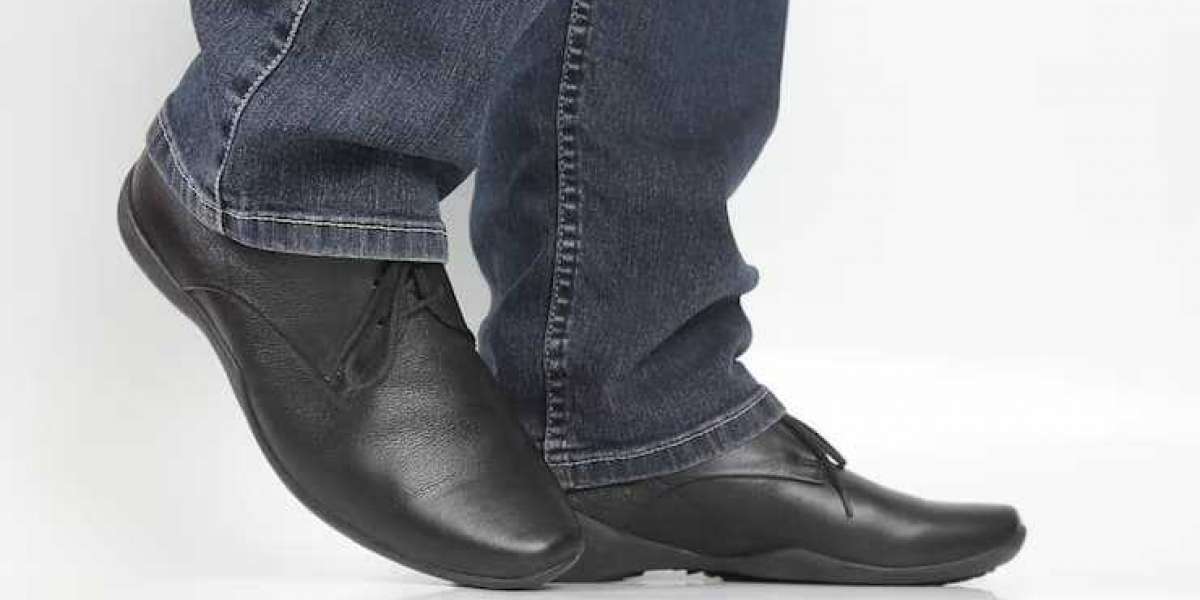Diabetes is a chronic condition that affects millions of people worldwide, leading to various complications, particularly in the feet. One of the most serious issues faced by individuals with diabetes is the development of foot ulcers and pressure sores. These conditions can lead to severe complications, including infections, amputations, and prolonged hospital stays. However, wearing appropriate diabetic footwear can significantly reduce the risk of these complications. This article explores the importance of diabetic footwear in preventing ulcers and pressure sores, detailing its design features, benefits, and the overall impact on foot health.
Understanding the Risks of Diabetic Foot Problems
Individuals with diabetes are at a heightened risk for foot problems due to several factors:
1. Neuropathy
Diabetic neuropathy is a common complication of diabetes that affects nerve function. This condition results in decreased sensation in the feet, making individuals less aware of injuries or pressure points. Consequently, small cuts or blisters can go unnoticed, leading to more severe issues such as ulcers.
2. Poor Circulation
Diabetes can lead to poor circulation, reducing blood flow to the extremities. This condition can impair healing, making it difficult for wounds or injuries to recover. When blood flow is compromised, even minor foot problems can escalate into serious complications.
3. Foot Deformities
Many individuals with diabetes develop foot deformities, such as bunions, hammertoes, or Charcot foot. These deformities can create pressure points on the foot, increasing the likelihood of developing ulcers and sores.
4. Skin Changes
Diabetes can also cause changes in the skin, including dryness and a lack of elasticity. These changes can make the skin more susceptible to cracking and injury, further increasing the risk of ulcers and pressure sores.
Given these risks, it is essential for individuals with diabetes to take proactive measures to protect their feet. One of the most effective strategies is investing in diabetic footwear.
The Role of Diabetic Footwear
Diabetic footwear is specifically designed to address the unique needs of individuals with diabetes. Its primary purpose is to reduce the risk of foot injuries, ulcers, and pressure sores by providing optimal support, protection, and comfort. The design features of diabetic footwear can be categorized into several key areas:
1. Cushioning and Shock Absorption
Diabetic footwear is equipped with specialized cushioning materials that absorb shock and reduce pressure on the feet. This feature is particularly important for individuals with neuropathy, as it helps to minimize the impact of walking and standing on sensitive areas of the foot. The cushioning also provides comfort, making it easier for individuals to wear the shoes for extended periods.
2. Support and Stability
Proper support is crucial for individuals with diabetes, especially those with foot deformities or balance issues. Diabetic footwear often includes features such as arch support, heel counters, and reinforced soles, which enhance stability and prevent excessive foot movement. This support helps distribute weight evenly across the foot, reducing the likelihood of pressure points forming.
3. Breathable Materials
Diabetic footwear is typically made from breathable materials that promote airflow and moisture-wicking. This feature helps keep the feet dry, minimizing the risk of fungal infections and skin irritations. Additionally, breathable materials can prevent excessive sweating, which can lead to discomfort and further complications.
4. Wide and Deep Toe Box
A wide and deep toe box is a hallmark of diabetic footwear. This design allows for ample space for the toes, reducing the risk of friction and pressure against the shoe. Individuals with foot deformities will particularly benefit from this feature, as it prevents the aggravation of bunions or hammertoes.
5. Seamless Construction
Many diabetic shoes are designed with seamless construction to reduce the risk of irritation and friction. Traditional shoes often have seams and stitching that can rub against the skin, leading to blisters and sores. Seamless designs minimize these risks, providing a more comfortable fit for individuals with sensitive feet.
Benefits of Diabetic Footwear
Investing in diabetic footwear offers numerous benefits that extend beyond simply preventing ulcers and pressure sores. Some of the key advantages include:
1. Enhanced Comfort
Diabetic footwear is designed with comfort in mind. The cushioning, support, and breathable materials combine to create a more enjoyable wearing experience. Comfortable shoes encourage individuals to stay active, which is essential for managing diabetes and overall health.
2. Improved Mobility
With the right footwear, individuals with diabetes can move more freely and confidently. The support and stability provided by diabetic shoes can enhance balance and coordination, reducing the risk of falls and injuries. Improved mobility allows individuals to engage in physical activities, which is vital for maintaining a healthy lifestyle.
3. Reduced Risk of Complications
By wearing diabetic footwear, individuals can significantly lower their risk of developing foot ulcers and pressure sores. The design features that prioritize comfort, support, and protection contribute to overall foot health. This proactive approach can prevent severe complications, including infections and amputations, leading to a better quality of life.
4. Increased Awareness of Foot Health
Wearing diabetic footwear encourages individuals to pay closer attention to their foot health. When individuals invest in proper footwear, they are more likely to engage in regular foot inspections and address any issues promptly. Increased awareness can lead to early detection of problems, ultimately preventing more serious complications.
Choosing the Right Diabetic Footwear
When selecting diabetic footwear, individuals should consider several factors to ensure they choose the best option for their needs:
1. Fit and Sizing
Proper fit is paramount when selecting diabetic shoes. Shoes that are too tight can create pressure points, while shoes that are too loose may lead to blisters and rubbing. Individuals should measure their feet regularly, as foot size can change over time. Trying on shoes at the end of the day, when the feet are most swollen, can provide a more accurate fit.
2. Consult with a Specialist
For individuals with specific foot conditions or deformities, consulting with a podiatrist or certified pedorthist can provide valuable insights. These specialists can recommend appropriate footwear options and assess individual needs based on foot structure and health history.
3. Look for Quality Materials
Investing in high-quality diabetic footwear is essential. Individuals should seek shoes made from durable, breathable materials that offer proper support. While cost may be a consideration, prioritizing quality can lead to long-term benefits in foot health.
4. Consider Custom Orthotics
In some cases, individuals may benefit from custom orthotics, which can be inserted into diabetic footwear for added support and cushioning. Consulting with a healthcare professional can help determine whether custom orthotics are necessary for individual foot health needs.
Taking Preventive Measures
In addition to wearing appropriate diabetic footwear, individuals with diabetes should adopt a comprehensive approach to foot care. Some preventive measures include:
1. Regular Foot Inspections
Individuals should perform daily foot inspections to identify any cuts, blisters, or changes in skin color. Early detection of issues allows for prompt treatment and reduces the risk of complications.
2. Maintain Good Hygiene
Keeping the feet clean and dry is essential. Individuals should wash their feet daily, dry them thoroughly, and apply moisturizer to prevent dryness and cracking. However, they should avoid applying lotion between the toes, as excess moisture can lead to fungal infections.
3. Keep Toenails Trimmed
Proper nail care is vital for preventing ingrown toenails and other complications. Individuals should regularly trim their toenails straight across and avoid cutting them too short.
4. Stay Active
Engaging in regular physical activity can improve circulation and overall foot health. Individuals should find activities that they enjoy and can sustain, whether it's walking, swimming, or participating in low-impact exercises.
Conclusion
Diabetic footwear plays a crucial role in preventing ulcers and pressure sores for individuals living with diabetes. By prioritizing comfort, support, and protection, these specialized shoes help mitigate the risks associated with foot complications. Investing in quality diabetic footwear, coupled with regular foot care practices, can significantly improve foot health and overall quality of life.
For those seeking more insights and resources on managing diabetes and enhancing foot health, visit Ler Magazine. Empower yourself with knowledge and take proactive steps toward a healthier future!







